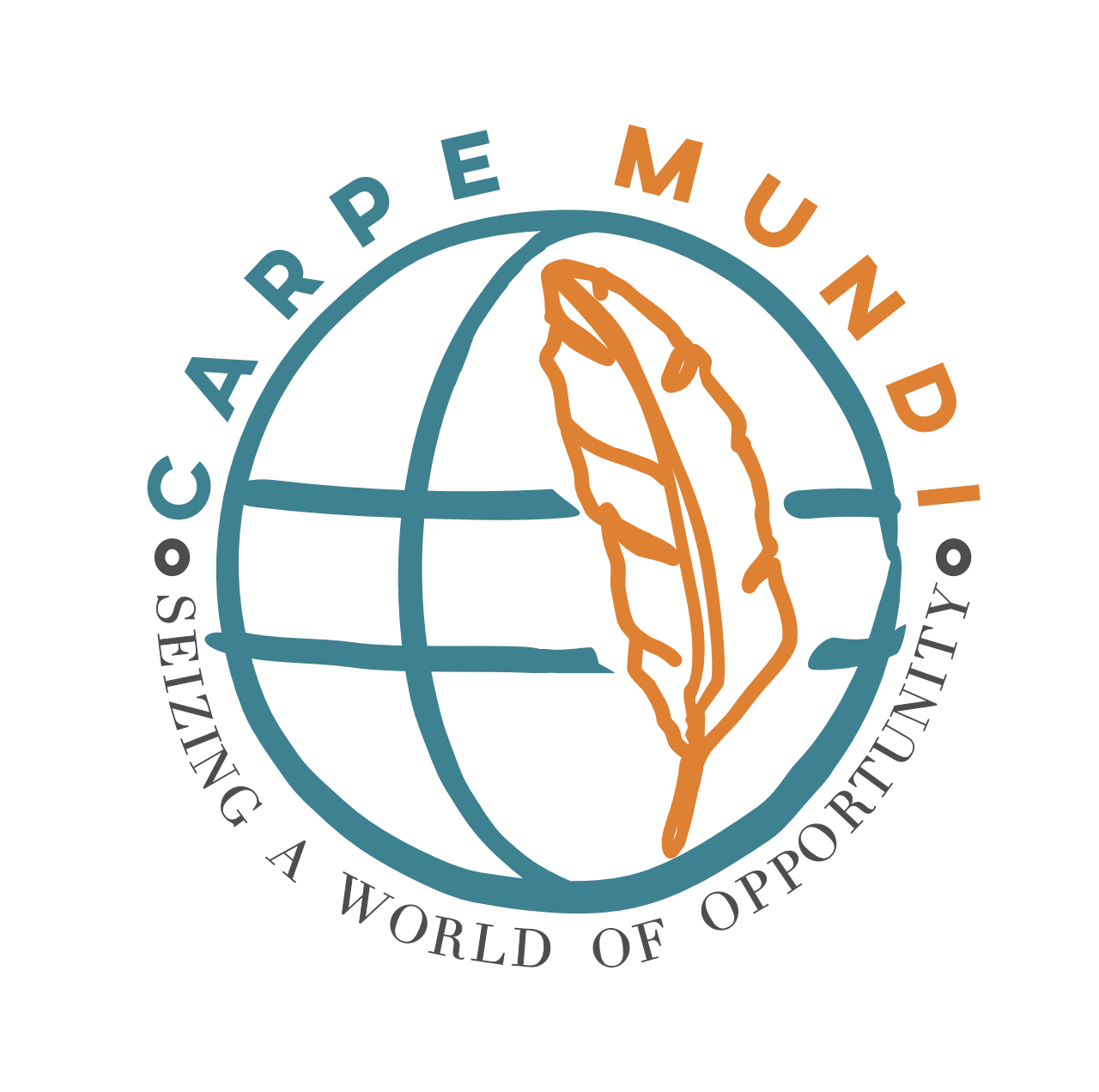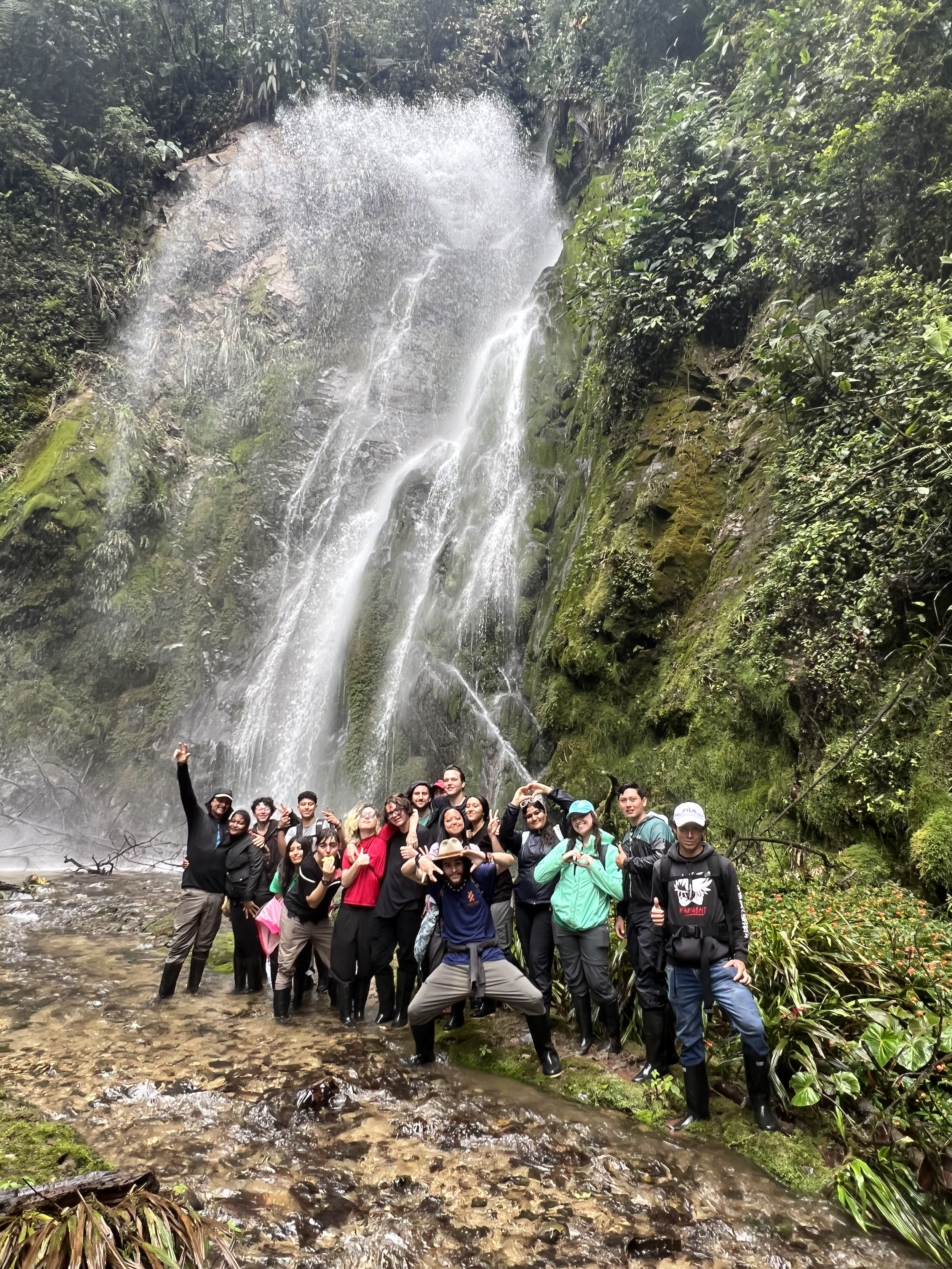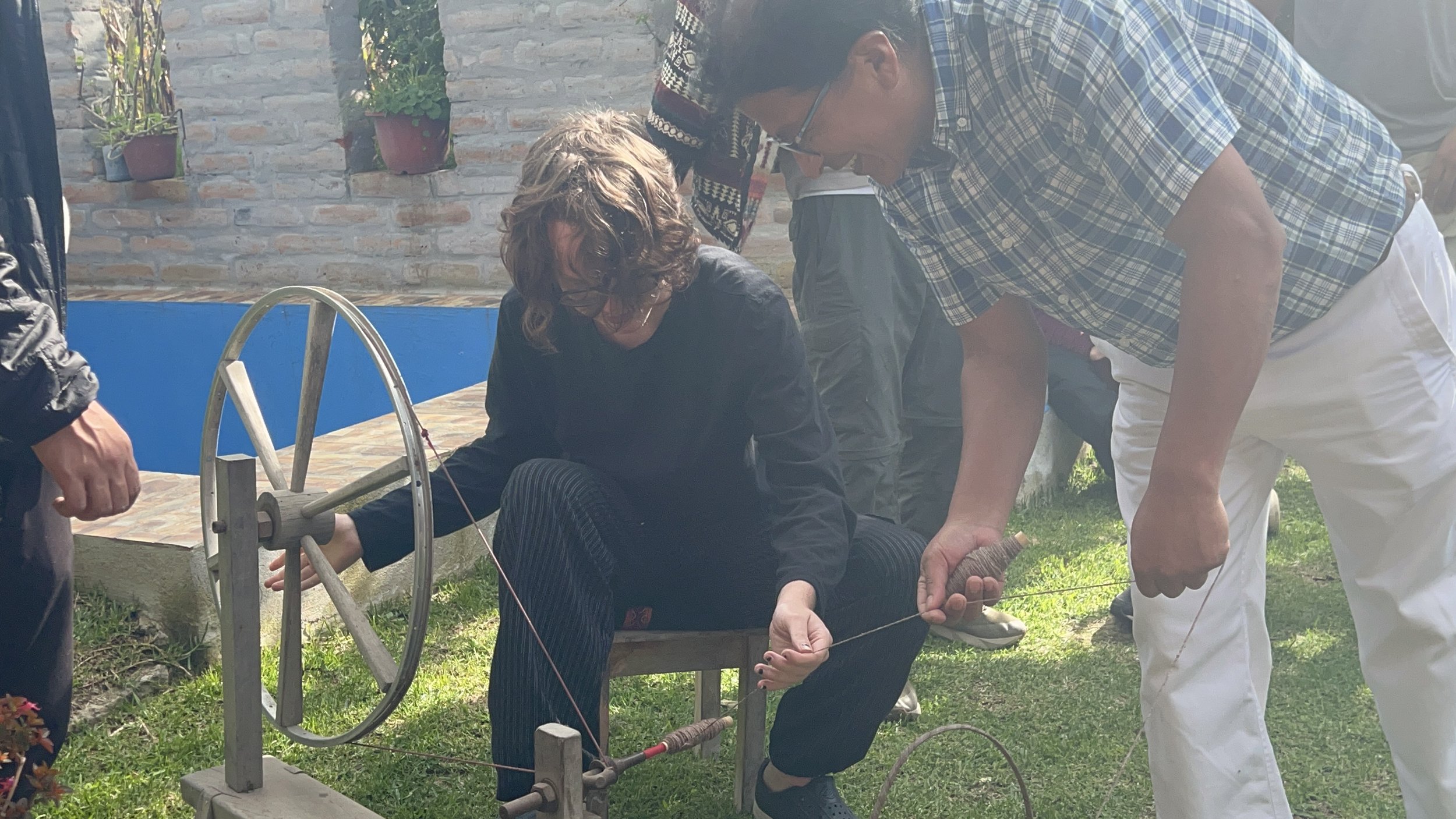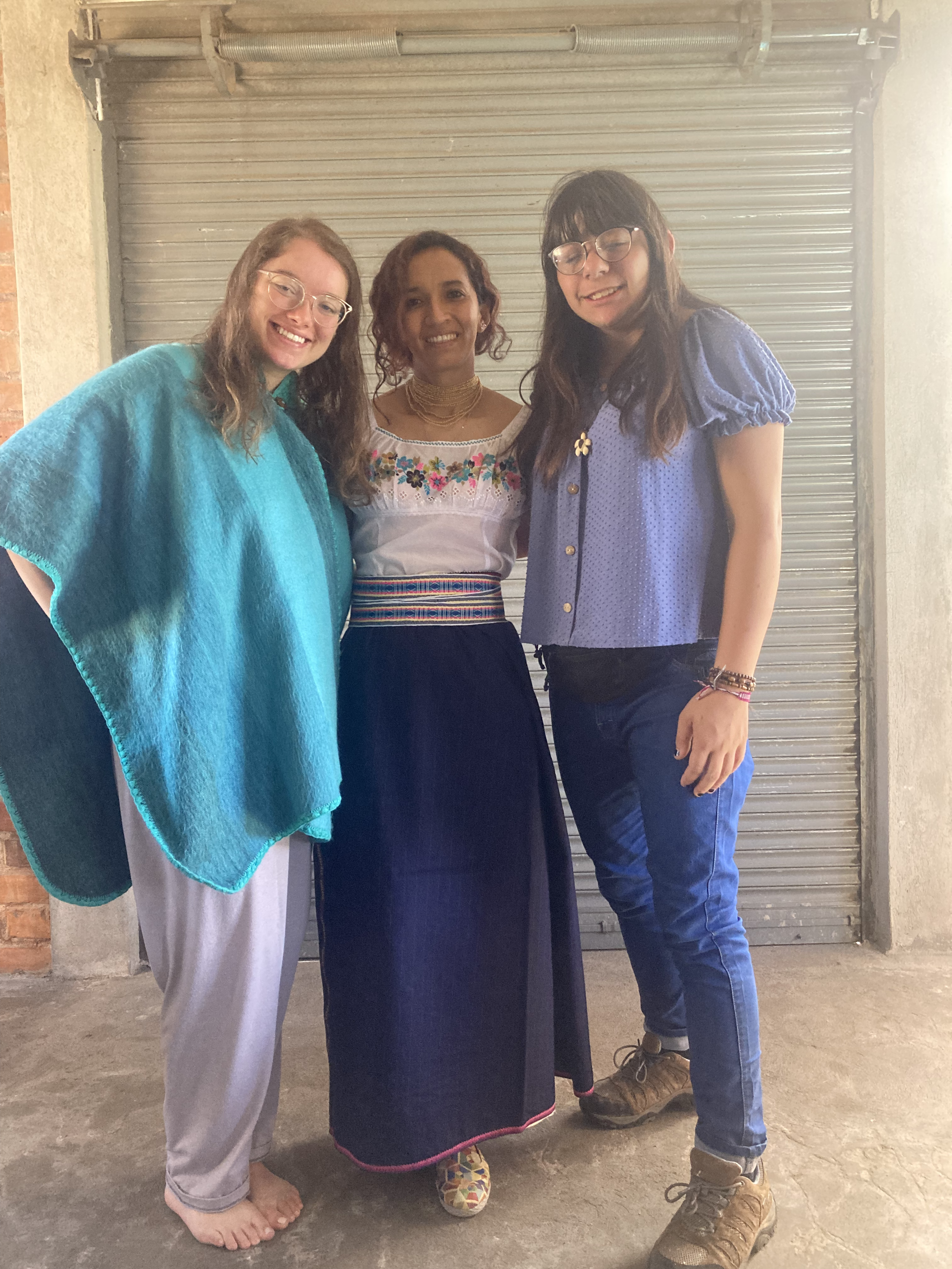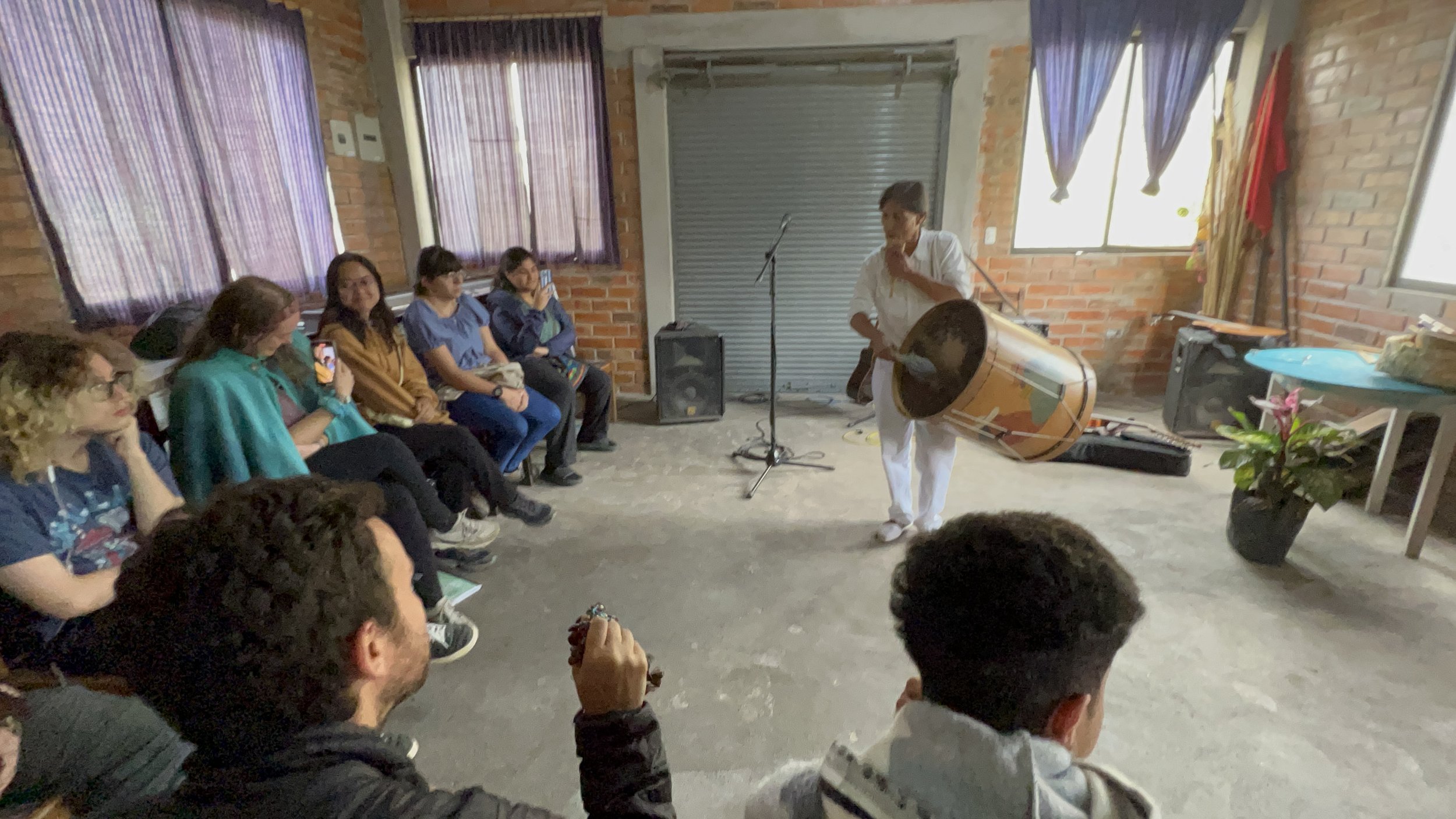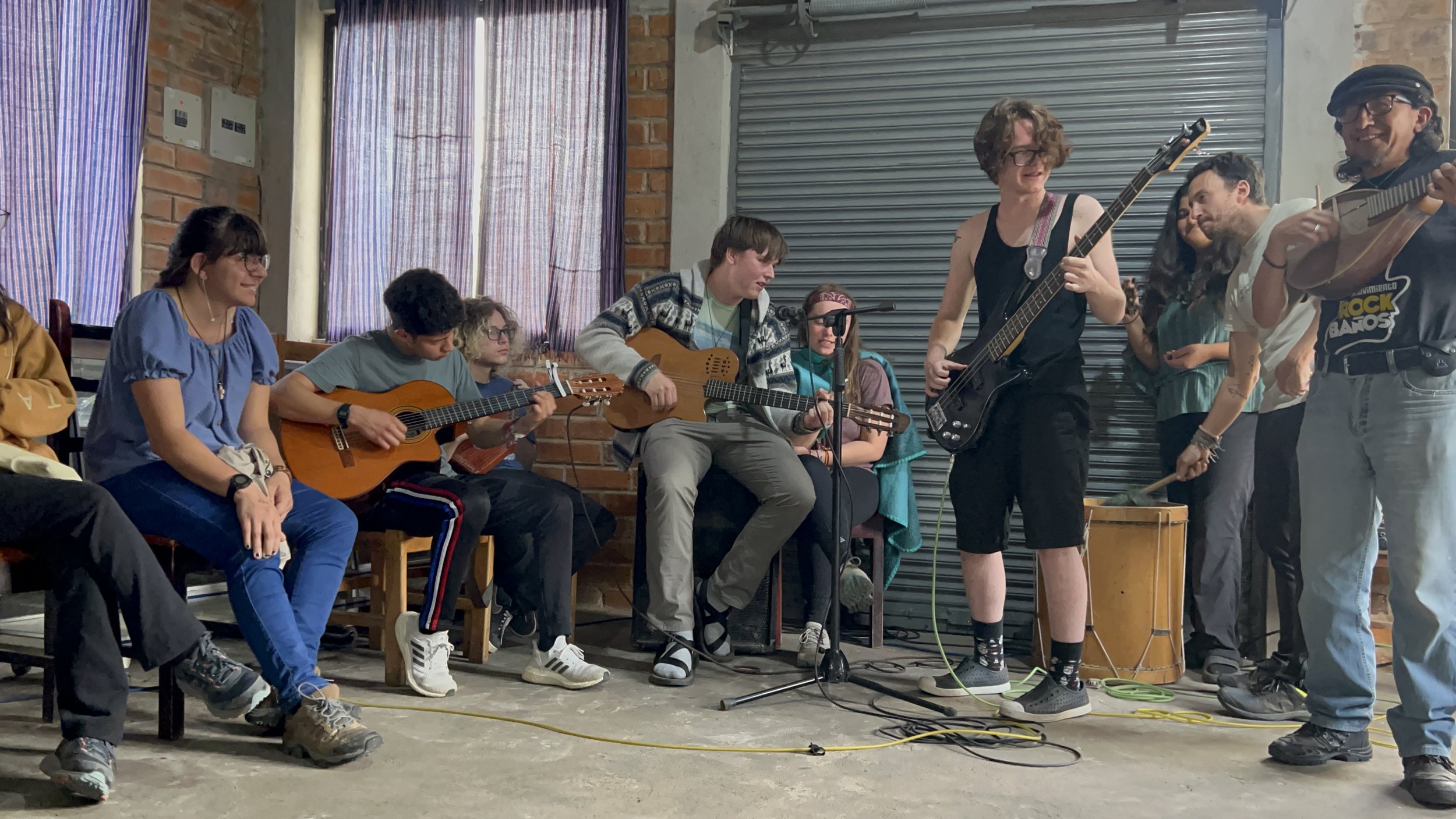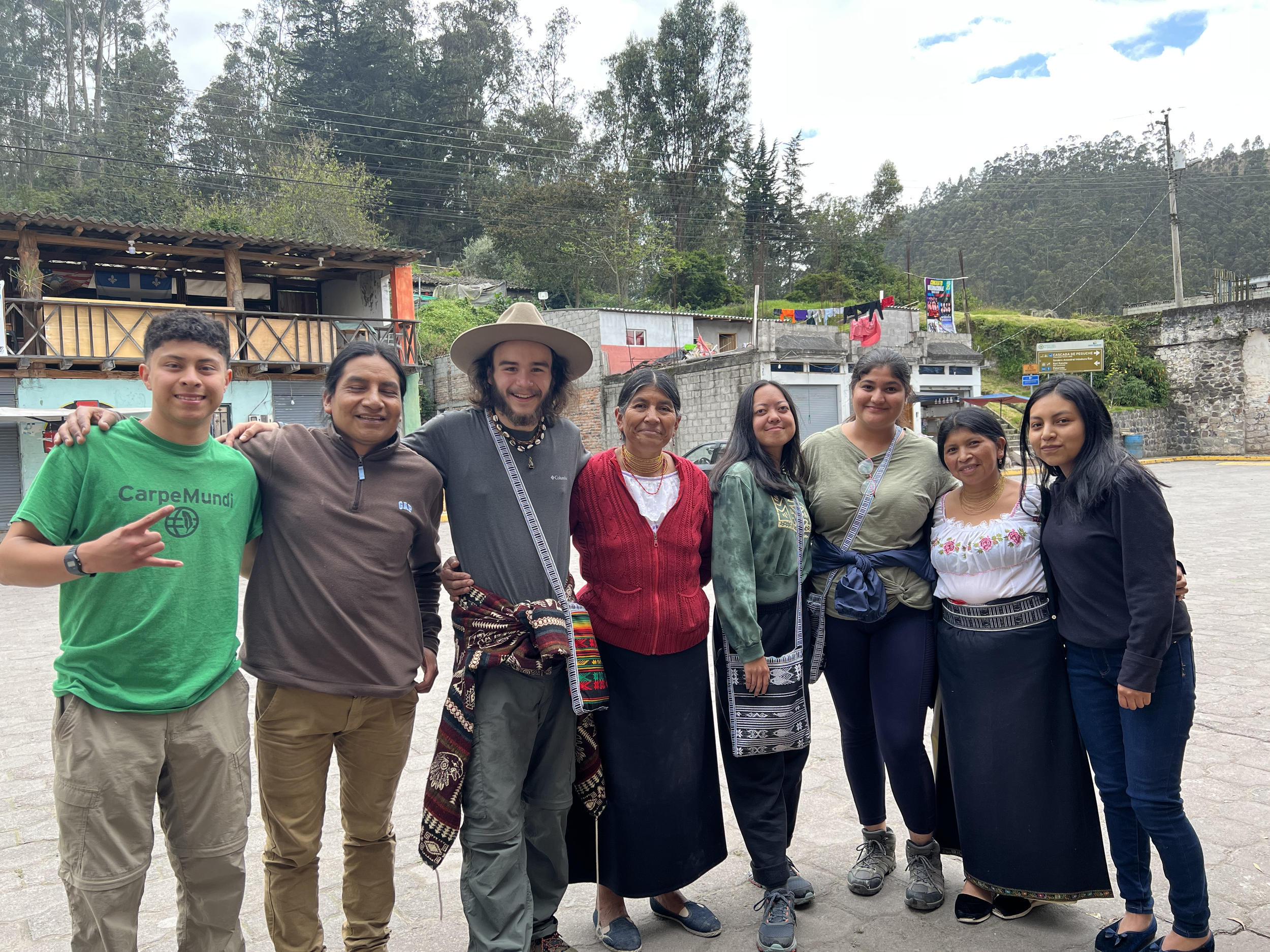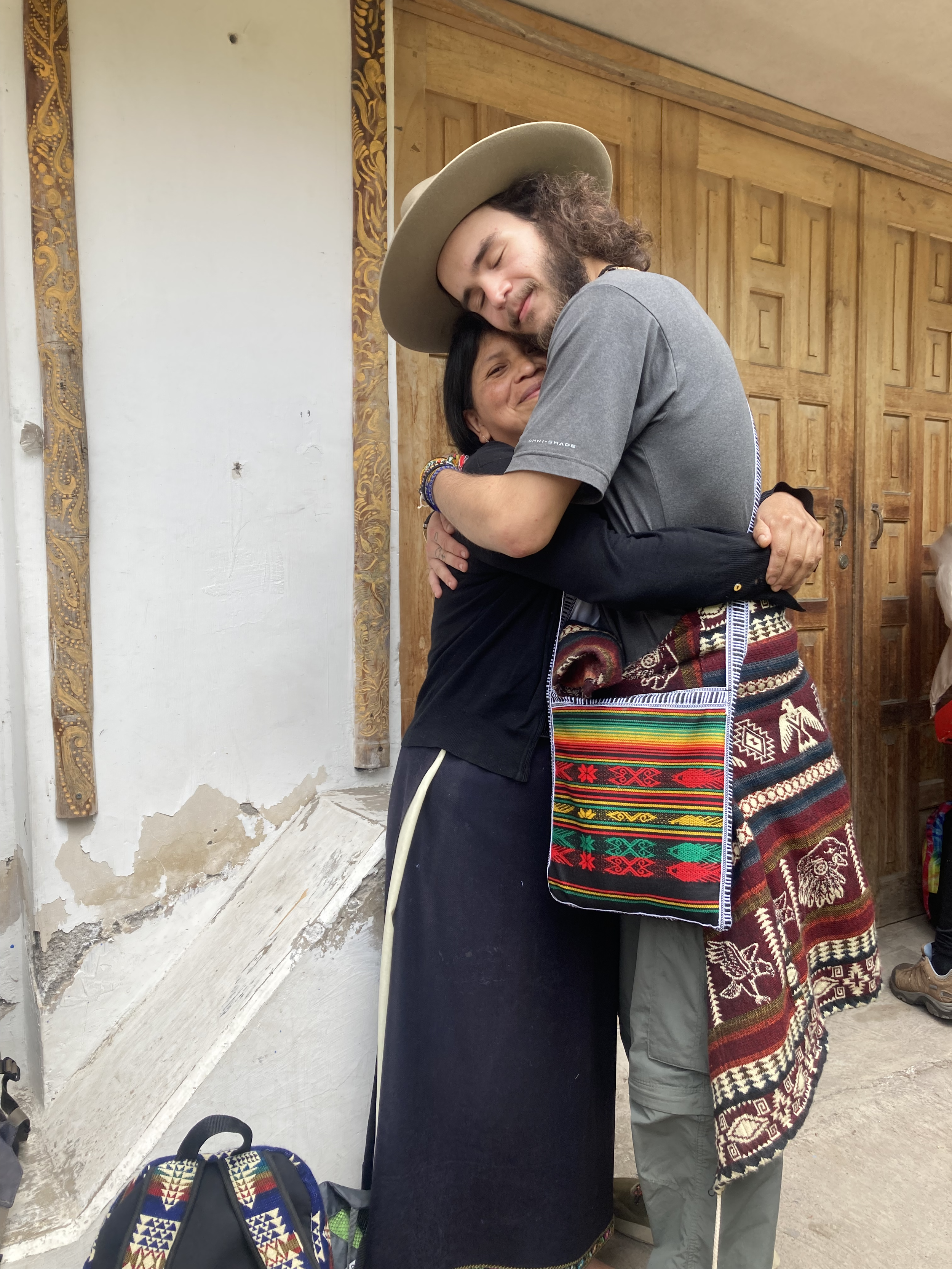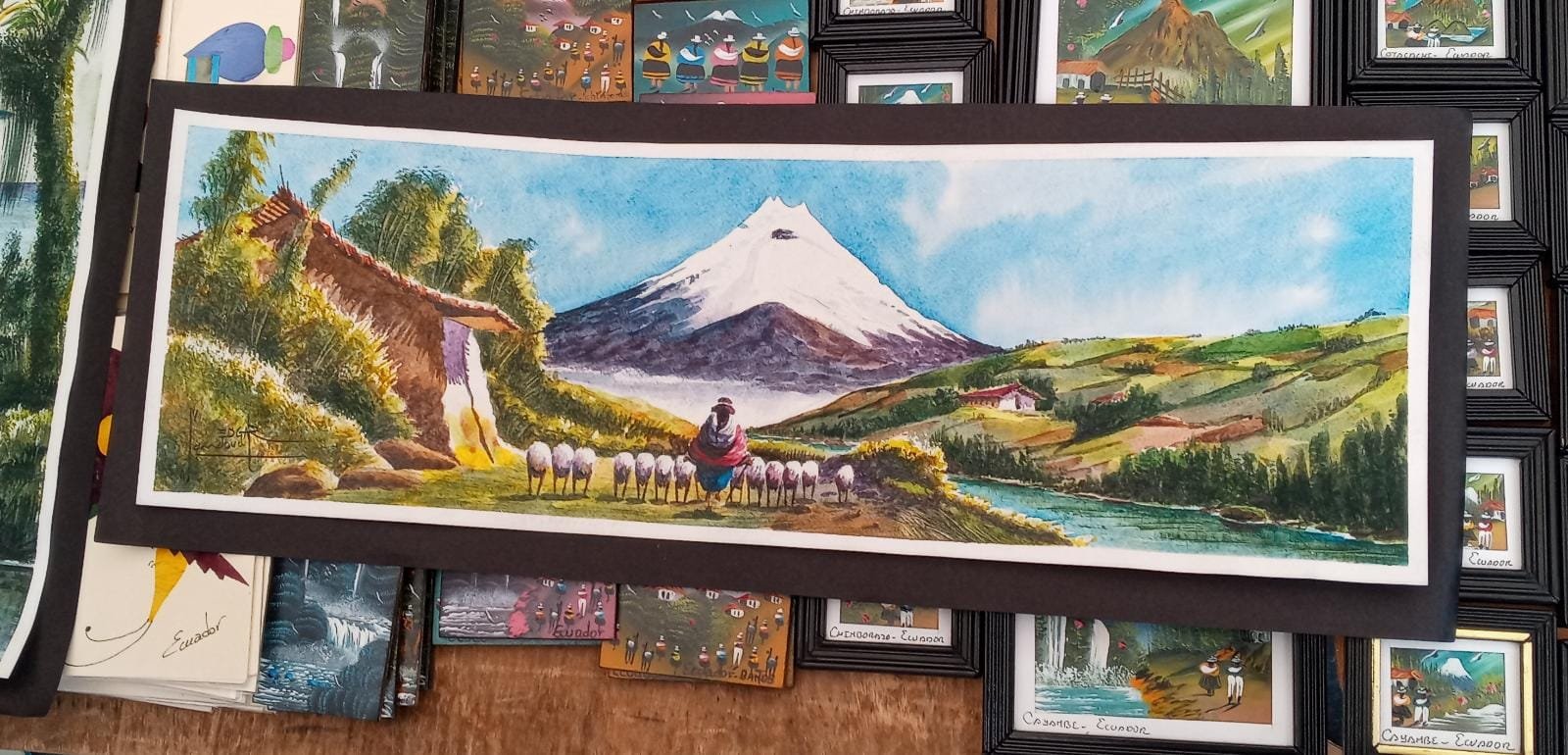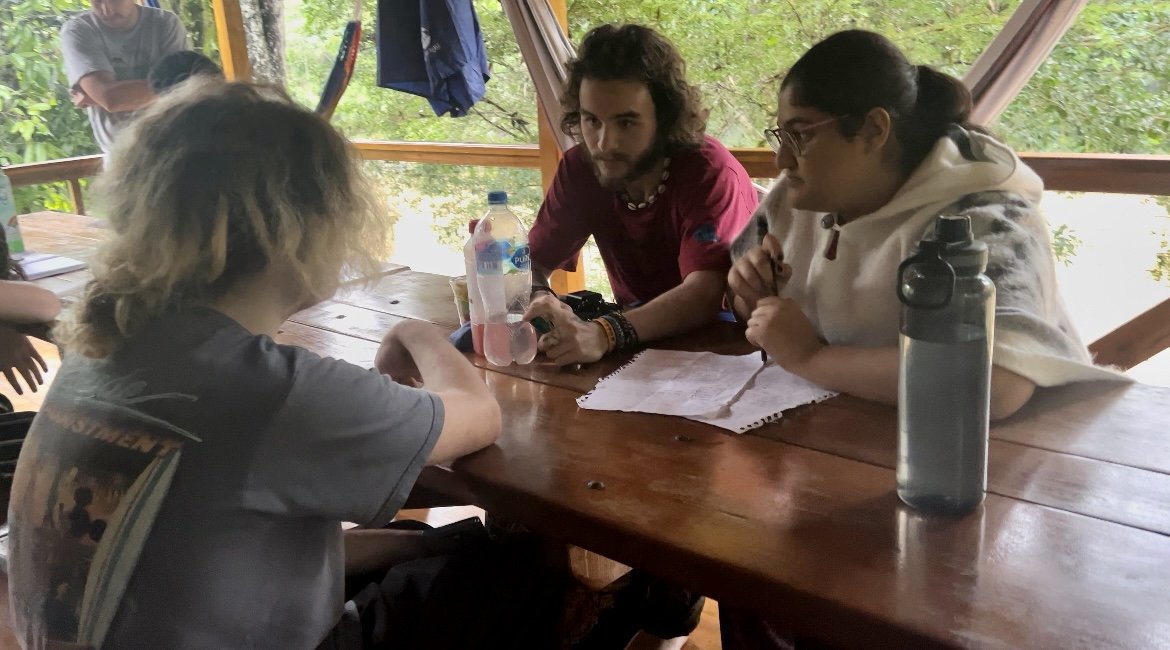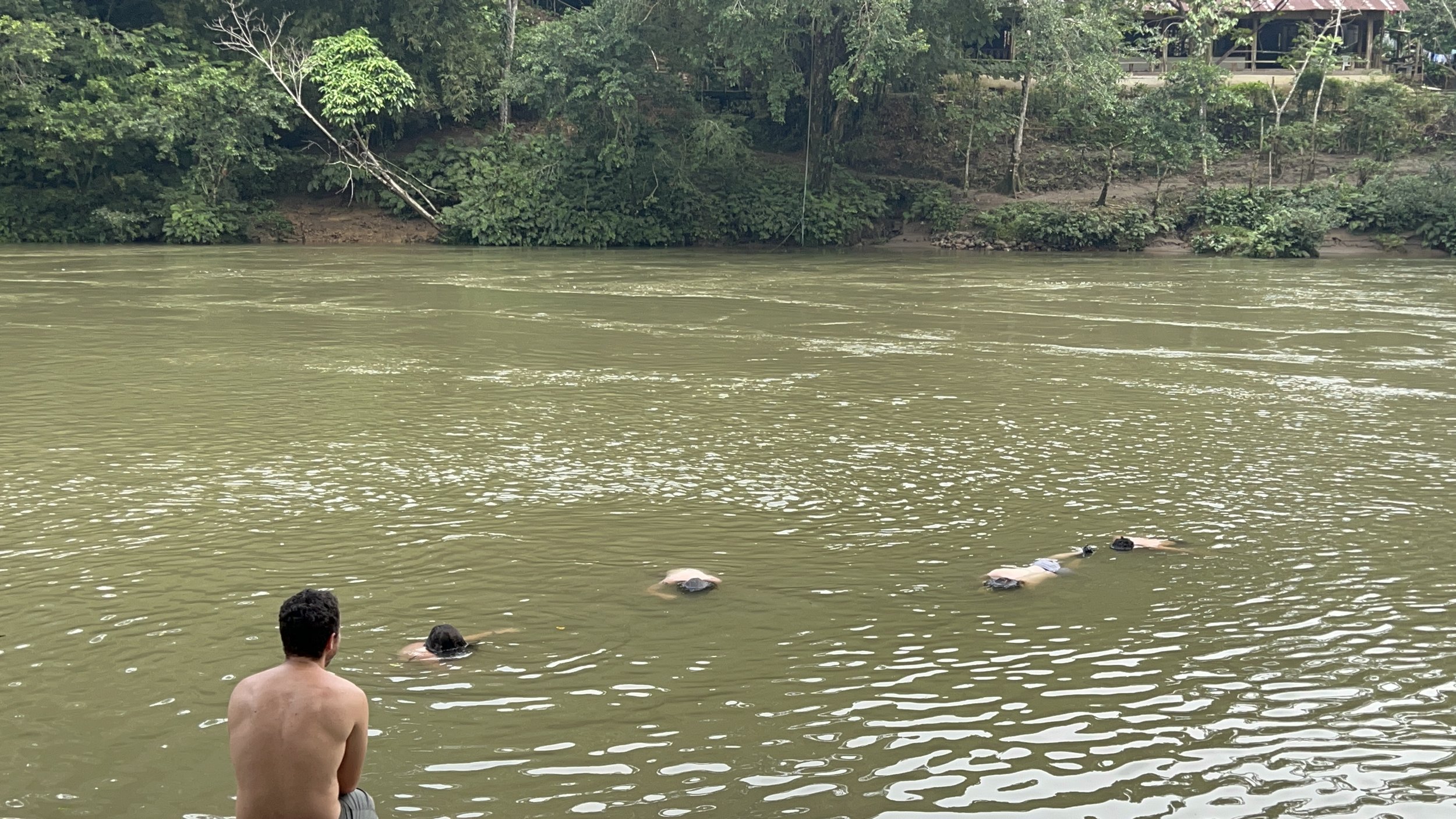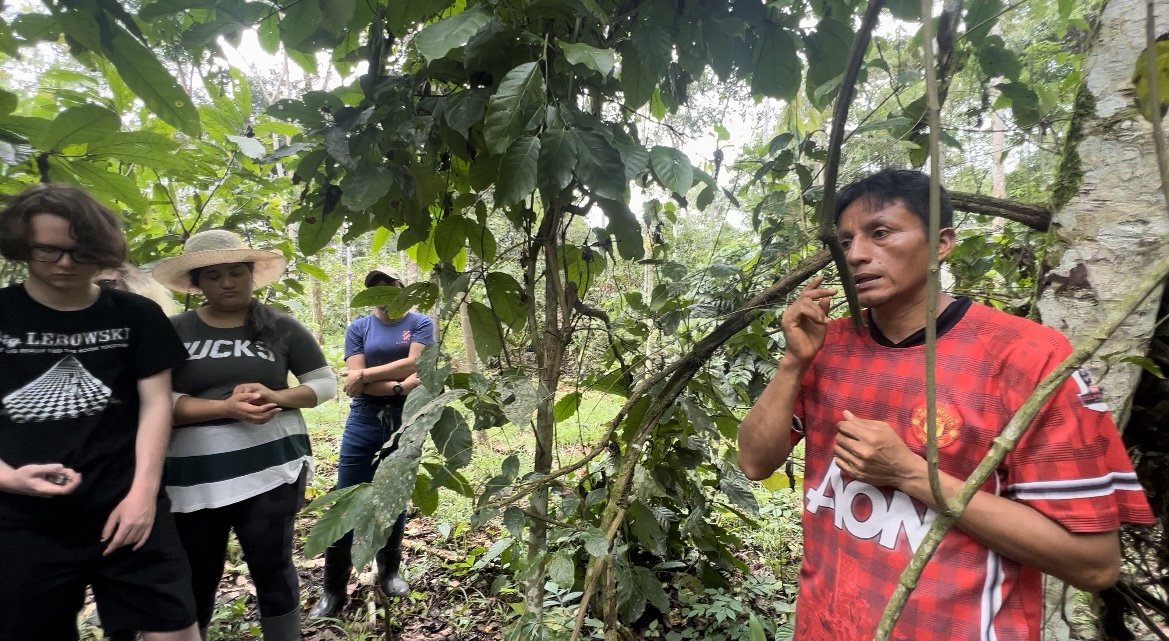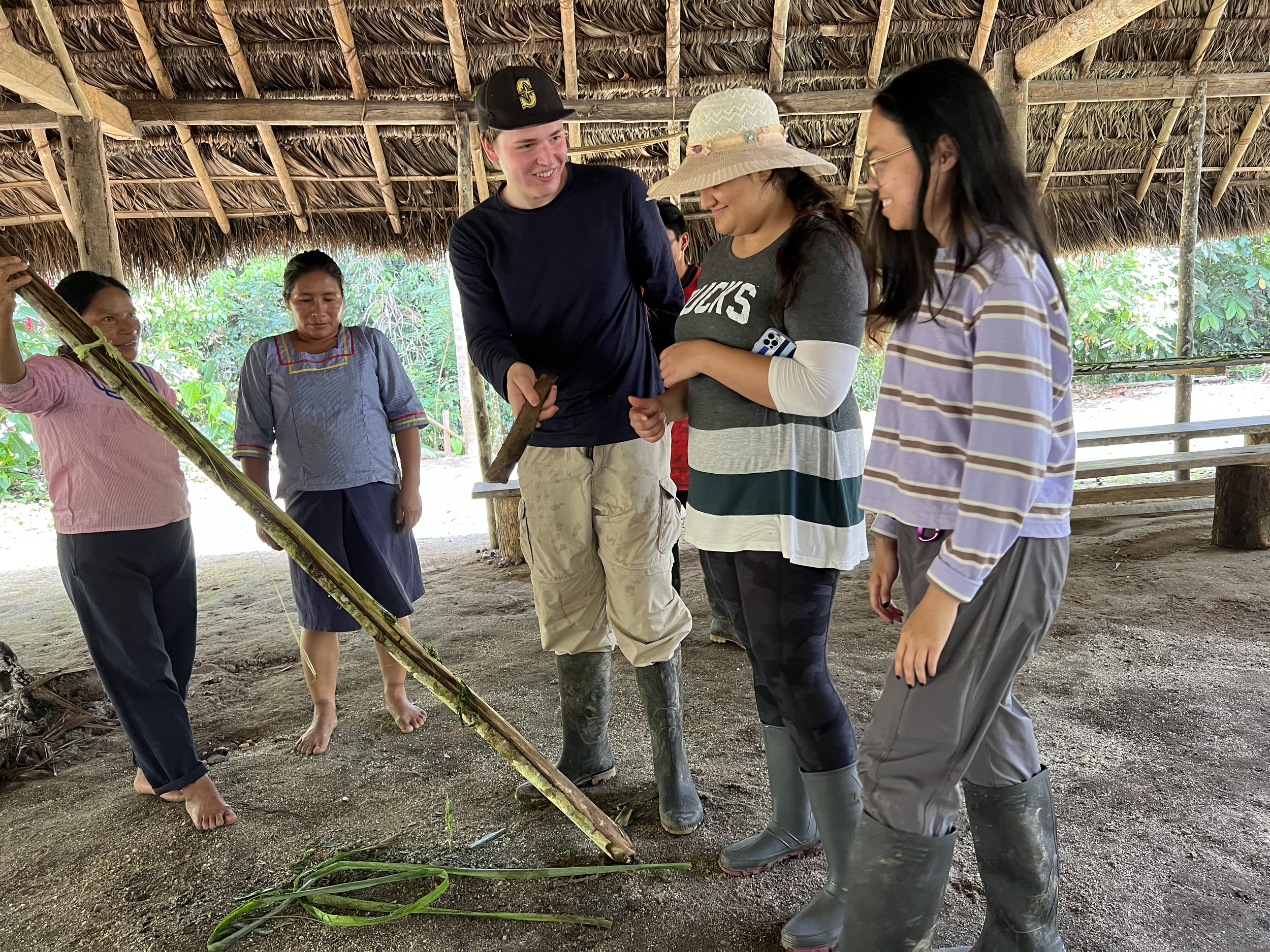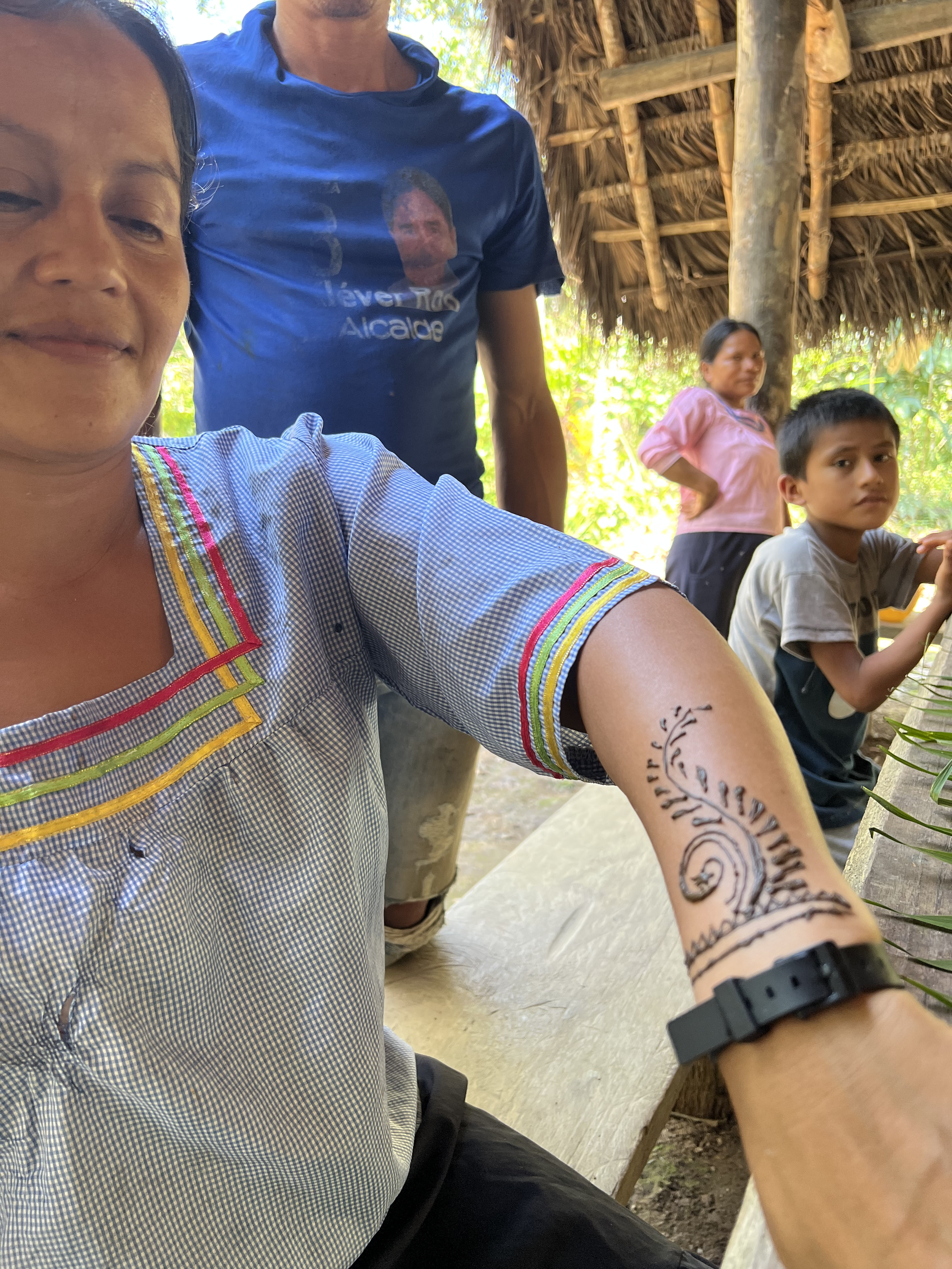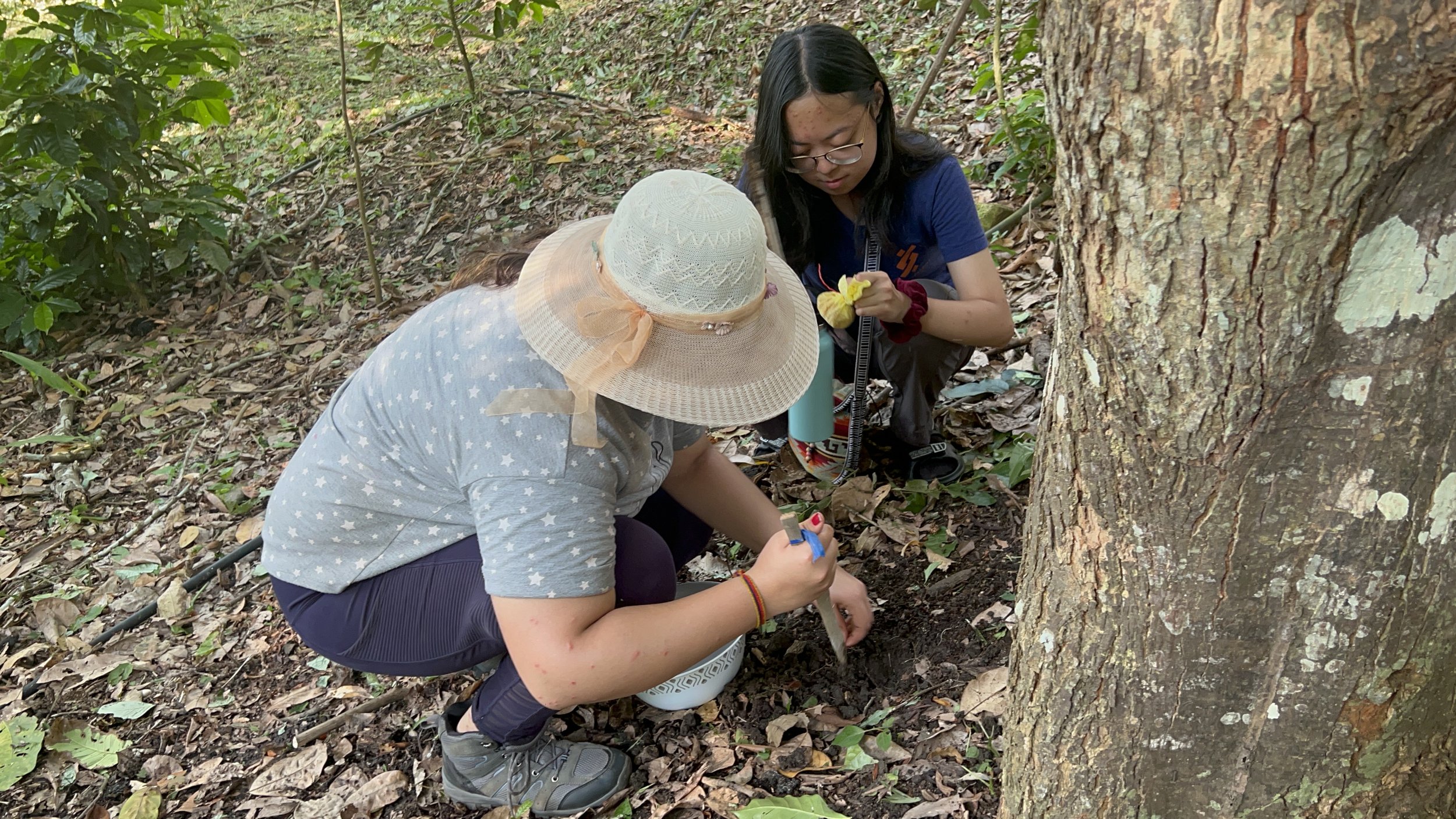Hello everyone this week I (Steven) led with Alice Yvonne and Balin. For this part of my blog post I want to start by thanking everyone who supported me (and us) along the way because this week was amazing. We left Peguche teary eyed and arrived at a place called San Antonio de Pucará located in the Intag Region which is a cloud forest. When we first arrived, we were greeted by the whole community - and had a celebration as a very nice generous welcome! The town was decorated, we played group games, and witnessed the young members of the community perform two wonderful dances. We also played lots of fun (and funny) games including one called chushpi where you spin a top with a whip and have to keep it spinning! Our time spent in Pucara and Junín was some of the most eventful and fulfilling to our hearts and spirits. During our time up there we stayed on a farm called Finca La Fé with Peter Shear (Pete) and his partner Julie - both who work very closely and are connected with preserving the Intag region - the most biodiverse region of Ecuador.
Walking through the welcome arch as Pete Shear waits for us on the other side!
The dance team from a neighboring community doing the Afro Latin Bomba.
Our accommodations this week were rustic and we all slept in tents and took really cold showers. It was glamping, which is camping with style! Even though we were off the grid we had some solar power which was a plus at night so we all could play card games at night. Without internet and limited electricity, we played card games and finished up presentations! On our first day in Pucara we went on a hike where we were making the trail as went. This was challenging for most of us and no problem at all for the kids who are part of the community’s Environmental Club. Our hike led us to a waterfall where we participated in water quality testing with the club. On the second day we learned a bit more about the farm, helped with collecting healthy soil and re-planting tiny coffee saplings. Pete also gave us a brief history of ‘extractivism’ in the Intag region. Even though we left Pucara after two days (where we received a lovely goodbye ceremony as well - how sweet <3), we followed Peter and Julie to Junin along with two of the teens from the community, Carlos and Romal, who joined us at our stay at an ecolodge in Junín.
Pete giving us a tour of the farm.
Looking for ripe pineapples on the farm.
Our work this week was really important as we learned all about mining and the impact it could have on this beautiful region which is really special to me (Alice). Currently this region is under mining concessions, and we had the opportunity to witness this environment in its natural, untouched beauty. In Junin, one of the locals shared their personal experience with mining companies. They shared a harrowing account that started when they were just our age! Their story included protests, paramilitary, not knowing where their family was for up to a year, and an unyielding desire to keep fighting for their community. Not only did we learn how mining could negatively impact people’s lives but we also learned how it would affect our earth and if they were to continue drilling. Mining in this region would put many species to extinction, contaminate water sources, and contribute to an imbalance in the ecosystem with untold effects. In the mornings we would be greeted by the sounds of the rare Yumbo, in this case a beautiful breed of bird eating budding fruits in the trees nearby.
A note: Coincidentally, it is believed that Pete’s property is home to a truncated pyramid and amphitheater built by the Yumbos who were an indigenous people to the region prior to the Incas.
The Barbudo Tucán (Toucan Barbet) referred to as the Yumbo.
We honored Pacha Mama’s beauty by exploring an area that may soon no longer exist on its own because different mining companies are exploring the land for copper and other rare earth metals. Witnessing the beauty of the natural landscape, it would be a tragedy to see the sub-tropical forests and waterfalls taken over by mining facilities. Inspired by this community’s fight, we went to work in the morning with the mission of partnering with the community so the Ecuadorian people in the Intag could keep their land.
A tree marked by the Mining companies to indicate areas explored.
Imagine a mining facility going right here next to this beautiful waterfall?!
We had help crossing this river without getting water in our boots from our friends Bryan and Jorge!
While working with the communities you can see how thankful they were to have us there after the pandemic. It was so heartwarming. Even though I didn't know them closely it felt like we knew each other forever and even if the sun wasn't shining their souls and hearts were shining through their smiles. Something I will especially miss is the food cause y'all know me (Steven), I love food! I might even need to go dance again to lose a few pounds!
The last bit of our mission and efforts with Pete and Julie, led us right back to Mindo - exactly where we started this trip. To be exact, it led us right back to the same hostel - La Casa De Cecilia! So cool! On our way to Mindo we stopped by at a nursery to help with loading 5000 young trees into a truck so that we could plant them the next day. Our reforestation efforts didn’t work out quite as planned due to some issues with when the truck got to the nursery. Then, when we were headed to the site, there was a landslide on the road just five minutes before we got there! It added another hour to our journey but we sure are thankful to have missed the landslide! Given all of the mishaps, we woke up before the sun the next morning to get a head start at the reforestation site. Unfortunately, we ran into more issues waiting on the truck to arrive. However, we can happily all say we assisted in the process of planting 5000 trees even if we physically didn’t put them in the ground (we transferred them all to and from a bus!)
Unloading trees off the truck in assembly line fashion. Pass ‘em back!
It is also worth noting that sometimes it’s not just us. Things don’t work out for a lot of people, like this person who’s cow made a run for it while we passed them in our chifa. (We caught most of it on video!)
Views from the road: a cow’s daring getaway!
Plus, it was awesome to be back to the place where we started and reflect on all of the adventure we had done so far these past two months in Ecuador. In fact, I (Alice) still had the egg Tiernan and I were charged with caring for during orientation. This felt like the perfect place to let Edgar, el huevo chido go. We are now off to Student Directed travel where we will be in Quito for Good Friday, back to Otavalo, and end in Quito one last time before flying home to PDX! Wish us luck in our next adventures :)
A natural casket-basket for Edgar, el huevo chido.
Alice Yvonne lets Edgar float away.
